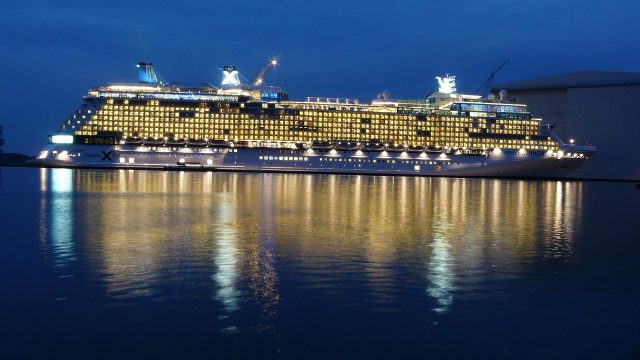Dr. IJ Arora:
In the first part of this two-part article, we began to consider the key commonality of accidents involving domestic vessels such as the Conception and the Spirit of Boston, namely, the absence of a fully functional management system. Here in part two, we will examine this in more depth from the perspective of the Plan-Do-Check-Act (PDCA) cycle.
Emphasizing a proactive safety culture and systematically addressing risks can greatly enhance safety in the domestic passenger vessel industry. By being vigilant and forward-thinking, companies can significantly reduce the likelihood of accidents and ensure the well-being of both crew and passengers. A comprehensive systems approach that prioritizes safety at all levels is essential for fostering a resilient maritime environment.
As a consultant with almost four decades of experience, I feel that my emphasis on fostering a proactive safety culture within the domestic passenger vessel industry is both timely and essential. The sector has historically witnessed incidents that stem not just from operational failures but from lapses in systematic risk management. The simple PDCA cycle makes risk appreciation essential and helps create a proactive management system. A proactive safety culture is not reactionary, but anticipatory. It is focused on identifying and mitigating risks before they evolve into incidents.
In domestic passenger operations, where crew and passengers coexist in dynamic and sometimes unpredictable environments, the safety culture must be leadership-driven, with management exemplifying and enforcing safety values. It must also be behavior-based, encouraging crew to speak up about near-misses or unsafe practices. An environment for quality, health, safety, and security must be built and maintained. The overall management system must be systems-supported, with procedures that make it easy to report, track, and correct hazards. A genuine safety culture is evident when every level of the organization—from executives to deckhands—considers safety an integral part of their responsibilities, not an afterthought.
Right at the start of the PDCA cycle, at the Plan stage, organizations must commit to identifying, evaluating, and mitigating risks. This is not just a best practice, but a requirement under clause 6.1 of ISO 9001:2015, which requires “… actions to address risks and opportunities.” It emphasizes understanding internal and external issues and planning actions accordingly to mitigate risk. In a similar vein, clause 8 of the ISM Code requires organizations to evaluate all identified risks to their ships, personnel, and the environment and establish appropriate safeguards. Failure to account for risks at this stage can cascade into the Do stage, with flawed procedures or untrained personnel resulting in increased chances of accidents.
In a systems approach it should be completely unacceptable to transfer uncertainty to the crew. Uncertainty in procedures, poorly defined emergency roles, or ambiguous hazard controls lead to hesitation and confusion during critical moments. The vessel crew should never be the first line of discovery for unanticipated risks. The shore-based organization must do the heavy lifting in identifying, documenting, and training for these risks. This principle aligns with clause 5 of the ISM Code, which mandates the establishment of safe practices in ship operations and a safe working environment.
Systemic safety as a shield against repetition must be created from lessons learnt. Clause 7.6 of ISO 9001 on knowledge is relevant and a requirement. As can be seen from various NTSB investigation reports, many vessel accidents share common causal factors: complacency, procedural lapses, miscommunication, or design flaws. These can be mitigated when a systems approach is employed linking technical systems, human factors, procedures, and training into one cohesive safety net. Lessons learned from past accidents are institutionalized not just in the safety management system (SMS) but in organizational memory and training routines.
Most importantly, risk appreciation must be the foundation of resilience. The ability to appreciate (not just assess) risk is what distinguishes a compliant company from a truly resilient one. Appreciating risk means embedding foresight into the organizational DNA, training teams to ask, “What if?” before a situation turns critical. This should holistically lead to and support the creation of maritime systems that do more than tick boxes—they save lives.
Applying the PDCA Cycle
Connecting these insights to the 2019 Conception tragedy not only reinforces the urgency of implementing a proactive safety culture but also illustrates precisely how systemic failures in risk appreciation, planning, and organizational accountability can lead to devastating outcomes.
As you will recall, the dive boat Conception caught fire while anchored off Santa Cruz Island, California. This resulted in the deaths of 34 people, which was the deadliest domestic maritime disaster in modern California history. The victims were asleep in a bunkroom below deck, and none of them survived. Only five crew members escaped. This tragedy was a catastrophic failure of planning, risk management, and safety culture.
The Conception disaster links clearly to a breakdown in the PDCA cycle, as follows:
- Plan. Inadequate risk appreciation was a vital failure. There was no comprehensive risk assessment identifying the dangers of leaving charging lithium-ion batteries unattended overnight in a confined space. The lack of clearly marked and accessible escape routes was a known risk that was neither mitigated nor escalated. There was no SMS, nor was one legally required for that vessel. Still, a proactive operator would have voluntarily implemented one. As has been said, “Failing to plan is planning to fail,” and in this case, a lack of foresight into fire hazards, emergency egress, and nighttime watchkeeping was fatal.
- Do. Lapses in implementation are apparent and have been pointed out in the NTSB report. A night watchman was required by regulation and the vessel’s certificate of inspection but was not on duty. The crew had no fire detection system below deck that could alert sleeping occupants of danger. Emergency drills and preparedness procedures were either nonexistent or insufficiently enforced.
- Check. The investigators saw no monitoring or audit mechanisms. The vessel operator, Truth Aquatics, had no self-checking mechanism for compliance with watchkeeping requirements. There was no internal audit or reporting structure that caught repeated violations, such as skipping the night watch.
- Act. This final stage of the PDCA cycle is intrinsically connected to leadership both ashore and at sea. However, there was almost a complete absence of any corrective action, despite past observations and near-miss warnings about battery charging risks and poor escape routes. The organization normalized deviation, operating under the illusion of safety through habit.
Failure to appreciate risk is a violation of ISO 9001 and ISM principles. The Conception incident demonstrates how not appreciating risk in the Plan stage—especially related to emerging threats like battery fires—can result in fatal vulnerabilities. Had a formal risk-based approach been followed, battery charging, watchkeeping, and egress issues would have been flagged and corrected.
Mitigating risks with an SMS
Although not mandated for this class of vessel, the absence of an SMS and risk-based approach violated the spirit of the ISM Code. Clause 8 calls for evaluating all risks and preparing for emergencies. The lack of a nighttime watch, poor escape design, and no contingency procedures represent failures in both design and culture.
The failure to appreciate hazards and risks by the organization on shore was passed to the crew and passengers, who paid for it with their lives. Passengers had no idea there was no overnight watch, a basic safety expectation. The crew was not empowered with procedures or tools to manage an emergency, placing them in an impossible position once the fire began. I therefore emphasize “companies cannot pass uncertainty to those on board.” The burden of risk must be identified, mitigated, and managed ashore, before the ship even leaves port. All that was required was a proper management system, resourced and implemented effectively and efficiently.
By not having an SMS, organizations are ensuring that there is no safety net in case the worst occurs! A comprehensive, systems-based approach could have identified the risk of charging batteries and flammable materials in confined quarters and ensured continuous watchkeeping practices were in place. The SMS would have required mandated drills, escape route evaluations, and fire detection systems. Simple internal audits would have perhaps given the management the inputs to ensure continual improvement and planned a system to ensure compliance. This would have embodied the PDCA cycle, where each stage feeds the next with learning, foresight, and action.
Conclusion
My final thought on lessons written in loss and tragedy are that having a system is the least those charged with entertaining people can do to guarantee that lives are not lost. The Conception tragedy in particular is a grim testament to what happens when safety is assumed rather than engineered. The call for a systems approach rooted in proactive risk appreciation is exactly the kind of thinking needed to prevent another such disaster.
My argument for the mandated or voluntary adoption of an SMS in the domestic passenger vessel sector draws on evidence from NTSB investigations and international best practices. Domestic passenger vessels, though subject to U.S. Coast Guard inspection regimes, are often not required to implement a formal SMS. This omission has led to repeated safety lapses where identifiable risks were not systematically mitigated. As we have seen, the consequences of such lapses can often be fatal.
It is time for the overall national policy to encourage the U.S. Coast Guard to extend SMS requirements to large domestic passenger vessels and establish tiered SMS models scalable by vessel type and operation. To the industry czars my recommendations are to encourage industry bodies to provide incentives and recognition for SMS adopters and promote voluntary adoption through education and resource support. To the organizations and companies operating in the domestic U.S. waters, I suggest these company-level actions:
- Begin voluntary SMS implementation aligned with ISO or ISM principles.
- Train personnel in the PDCA methodology.
- Perform internal audits and hazard reviews regularly.
The tragedy of the Conception and the other incidents we have discussed reveal that compliance alone does not ensure safety. Only a structured, systems-based approach can prevent recurrence. It is time for the domestic passenger vessel industry to adopt SMS—not only as a regulatory checkbox but as a foundational safety ethos.
Note – The above article (Part 2) was recently published in an Exemplar Global publication – ‘The Auditor’








